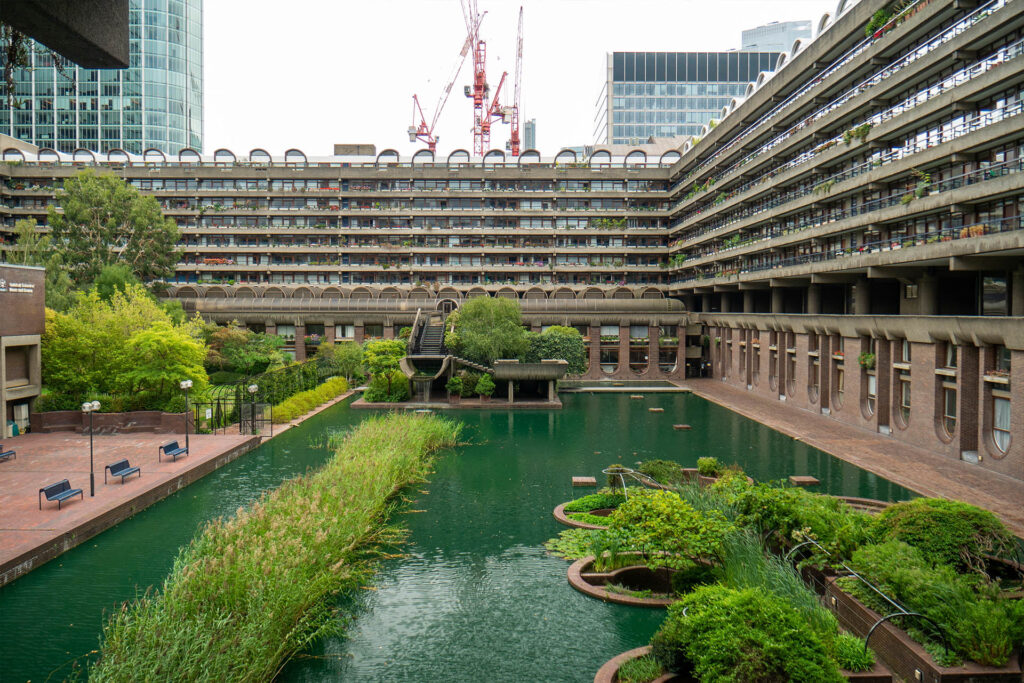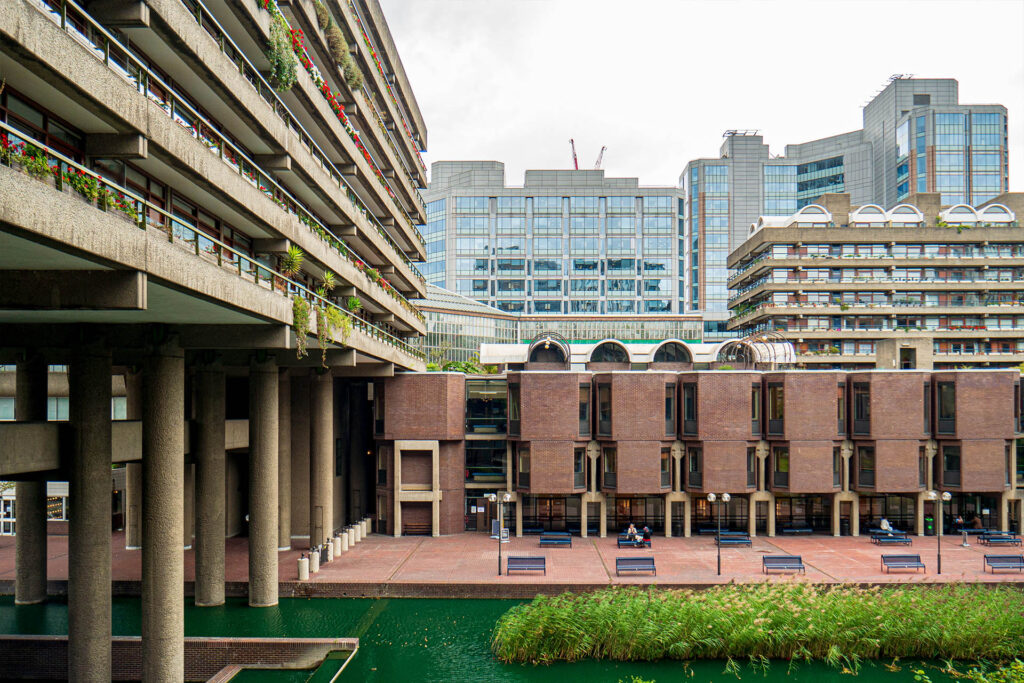Sited in the heart of the current City of London, the Barbican development represents a fascinating study on creating an urban town within a city. Construction commenced in 1965 to replace an area known as Cripplegate, which was almost totally destroyed during the Blitz, and it was decided to rebuild the 35 acre site as a futuristic town for over 4000 city professionals and their families – but in an entirely new and ground-breaking way. Incorporating the Barbican Arts Centre, the Museum of London, at least two schools and a library, restaurants and shops, a medical centre and dentist as well as approximately 2,000 flats and a tropical conservatory the complex provides everything needed to live.
Situated on a site that first was built on by the Romans, constructing a fort protecting the NW of their city, many Roman and later elements remain. Within the Barbican complex there are old walls, circular remnants of watchtowers, and even in the basement car park, the remaining part of the old Cripplegate. These ancient buildings have influenced the design of the estate, retaining many as features within the landscape.

This innovative but brutalist styled development separates vehicles and pedestrians vertically; access roads and car parking is at ground or basement level and pathways and accommodation at subsequent levels. The whole complex is linked by “Highwalks” – walkways across the estate giving access to the towers and buildings without needing to return to ground level.
So what does this Grade 2 listed concrete township in the centre of London have that is of interest to GreenBlue Urban; enthusiastic and passionate advocates for urban trees and canopy cover? It is the hidden green space within the Barbican outer walls that helps make these apartments so desirable and liveable. Designed to be concealed from the general public, the view as you walk around the estate is breath-taking. Vast areas of water (lakes, ponds, waterfalls and fountains) interspersed with quiet nature reserves and parks with mature tree planting designed around the medieval church of St Giles-without-Cripplegate giving a character that many modern estates lack.

One of the original design specifications was that the trees should be extra-mature specimens; trees were grown on at nurseries around the UK. Carefully prepared for at least 3 years before transplantation, these trees were planted at over 10m in height, giving an instant maturity to these landscapes – even before anyone moved into the development!
One of the amazing facts about these beautiful landscaped private garden areas is that many of them are on podiums – gardens over roads, railways and other basement spaces. Over 50 years later, GreenBlue Urban regularly work with landscape architects desiring to replicate this iconic development, maximising developable area whilst still allowing for a quality of landscaping that will maximise revenue from these assets. One consideration that must be taken into account is the structural capabilities of these podiums. At the Barbican certain areas do not have trees as the structure below cannot cope with the weight.
The creation of these green spaces within the estate have allowed a rich bio-diverse eco-system to flourish. The wide species choice including Robinia, Ash, Ailanthus, Horse Chestnut, Catalpa, Lime, Silver Maple, London Plane, Norway Maple, Paulownia, Holly, Yew, Crab Apple, Willow-leaf Pear, Stags-horn Sumach, Snowy Mespilus, Whitebeam and Hawthorn. This mixture of native and non-native, deciduous and evergreen means that there will be colour, interest and bio-diversity all the year round.

In one area where waterproofing needed to be replaced, Nigel Dunnett of the University of Sheffield redesigned the garden to be lower maintenance and to have successive waves of colour throughout the year. This refurbished area has been carefully designed to cope with less water than previously by choosing species which tolerate dry periods- thus reducing the costs of irrigation.
In conclusion, the Barbican complex is an enviable place to live. With all facilities on hand, private greenspace providing a quality of life not available elsewhere within the City and surrounded by history, no other development offers these unique features. GreenBlue urban considers that the tree planting, planned at an early stage and completed before residents moved in makes the whole area unique and suggests that if other developments were able to work more collaboratively with landscape professionals at an early stage, better long term mixed use developments will give better opportunities for health and well being and reduce the chances of us constructing the slums of the future.



